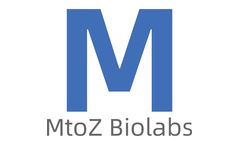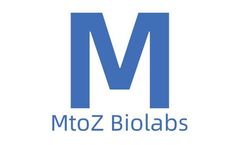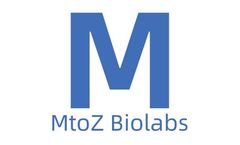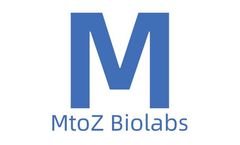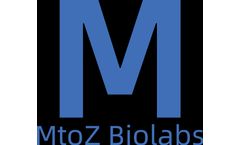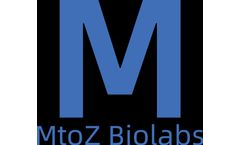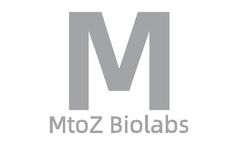Lcms Articles & Analysis
35 articles found
In the intricate world of cellular biology, proteins are the undisputed workhorses. They are assembled based on a genetic blueprint, but their story doesn't end there. After synthesis, proteins undergo a vast array of chemical modifications known as post-translational modifications (PTMs). These changes act as molecular switches, fine-tuning a protein's function, localization, and stability. ...
In the bustling city of the cell, proteins are the tireless workers. They build structures, carry messages, and catalyze the chemical reactions essential for life. But a protein's job isn't static. Its function, location, and even its lifespan are tightly controlled by a series of modifications. Among the most versatile and critical of these is Protein Ubiquitination, a process that acts like a ...
When you hear the word "sterol," your mind probably jumps to one famous, and often misunderstood, molecule: cholesterol. We’re constantly bombarded with messages about "good" and "bad" cholesterol, and its impact on our cardiovascular health. But what if I told you that cholesterol is just one member of a vast and vital family of molecules called sterol lipids? This diverse group is ...
The Hidden Language of Glycans Imagine a vast molecular conversation happening within and between cells—where sugar-based structures act as sophisticated messengers carrying critical biological information. These complex carbohydrate structures, known as glycans, represent far more than simple decorative elements on proteins and lipids. They constitute an intricate "glycocode" that ...
Lipids, often simply thought of as fats, play a far more complex and vital role in our bodies than just energy storage. They are fundamental building blocks for cell membranes, crucial for nutrient absorption, and, significantly, the precursors to a powerful class of signaling molecules: steroid hormones. Understanding the deep connection between Lipid Metabolism and these hormones, along with ...
Glucosinolates are important secondary metabolites found predominantly in cruciferous vegetables such as broccoli, cabbage, Brussels sprouts, and radish. These sulfur-containing compounds play a dual role in plant biology and human health, making them a fascinating subject of study in fields like agriculture, nutrition, and medicine. Their ability to protect plants from pests and diseases, along ...
Exosomes, small vesicles released by cells, play an increasingly prominent role in intercellular communication and disease modulation. These nano-sized particles contain a diverse array of molecular cargo, including proteins, lipids, RNA, and metabolites, which serve as biomarkers for a variety of physiological conditions. Exosome lipidomics and metabolomics are key fields that focus on profiling ...
Antibody drugs are a kind of drugs that treat diseases through artificially synthesized antibodies, achieving therapeutic purposes by specifically binding with target molecules. Common types of antibody drugs include monoclonal antibodies, artificially synthesized antibody fragments, immunotoxins, antibody-drug conjugates, etc. Antibody drugs have shown remarkable therapeutic effects in the ...
Collagen is a crucial structural protein, widely presenting in human skin, bones, tendons, ligaments, and other tissues. It's essential for maintaining the structural integrity and function of tissues. The measurement of collagen can help researchers and physicians understand the pathological process of related diseases (such as osteoporosis, arthritis, skin aging etc.), and also aid in drug ...
Collagen is an important structural protein that is widely found in various biological tissues, such as skin, bones, tendons, and blood vessels. Accurate determination of collagen content is very important for biomedical research, disease diagnosis and quality control of related products. Here are some commonly used methods for determining collagen content.ChromatographyHigh-performance liquid ...
Differentially expressed proteins refer to proteins that show significant changes in their expression levels in different biological samples or under different treatment conditions. Observing such differential expression is crucial for understanding cellular physiology and disease mechanisms. For example, some proteins may be upregulated or downregulated in health and disease states, or between ...
Antibody-drug conjugates (ADCs) represent a groundbreaking class of therapeutics that combine the specificity of monoclonal antibodies (mAbs) with the potent cytotoxic effects of small-molecule drugs. This synergistic approach allows for targeted delivery of the cytotoxic agent to cancer cells while sparing healthy tissues, thereby reducing side effects and enhancing therapeutic efficacy. ADC ...
Ubiquitination is a widely present method of protein modification. It manages its designation, activity, stability, and interaction by marking proteins, playing a crucial role in the regulation of cellular functions and biological processes. Therefore, measuring the ubiquitination level of a protein is significant for understanding its function and regulation mechanism. This article mainly ...
Messenger RNA (mRNA) is a ribonucleotide sequence that encodes a protein, primarily consisting of five main parts: the 5' end is a cap structure (Cap), the 5' untranslated region (UTR) related to translation efficiency, the open reading frame (ORF) area that encodes a protein, the 3' UTR related to translation efficiency, and the polyA tail synthesized by multiple adenosine monophosphates, which ...
The detection of mRNA capping efficiency is a process used to assess whether the cap structure (usually a 7-methylguanosine triphosphate (m7G) cap) on the 5' end of mRNA molecules has been successfully added. This cap structure is crucial for the stability of the mRNA and its translation efficiency within cells. The 5' cap of mRNA plays several key biological functions: regulating nuclear output, ...
Since antibody-drug conjugates (ADCs) have the molecular characteristics of both small molecule and macromolecule therapeutic drugs, when choosing analytical methods, the typical ones used for both should all be considered. There are many different molecules in ADCs, and the difference between these molecules lies in the drug-to-antibody ratio (DAR) value and/or the site where the antibody binds ...
Metabolomics is developing rapidly. In medical science research, it is hoped that analysis to identify abnormal metabolic pathways and characteristic biomarkers closely related to diseases will provide a basis for further elucidation of disease pathogenesis. Metabolomics Research Methods Metabolomics collects samples through established metabolomics research methods, and subsequently uses ...
In the realm of biological sciences, bile acids stand as pivotal molecules, playing a multifaceted role in various physiological processes within organisms. Bile acids are specialized molecules synthesized from cholesterol within the liver. These amphipathic compounds possess a hydrophilic region (carboxylic acid moiety) and a hydrophobic region (steroid backbone). Their distinctive structure ...
Bile acids are synthesized in the liver from cholesterol as a raw material. As a natural "emulsifier", they can promote the dissolution, digestion and absorption of fats, fat-soluble vitamins, etc. Meanwhile, as an important signaling molecule, bile acids can activate the relevant receptors to maintain the homeostasis of hepatic glucose and lipid metabolism, and interact with gut bacteria to ...
Introduction of Drug Affinity Responsive Target Stability (DARTS) Drug target protein identification is an important step in the research and development of new drugs. Drug Affinity Response Target Stability (DARTS) is a technique that can rapidly and directly identify potential target proteins of small molecule drugs. That is, it prevents the target protein from being hydrolyzed by proteases ...



